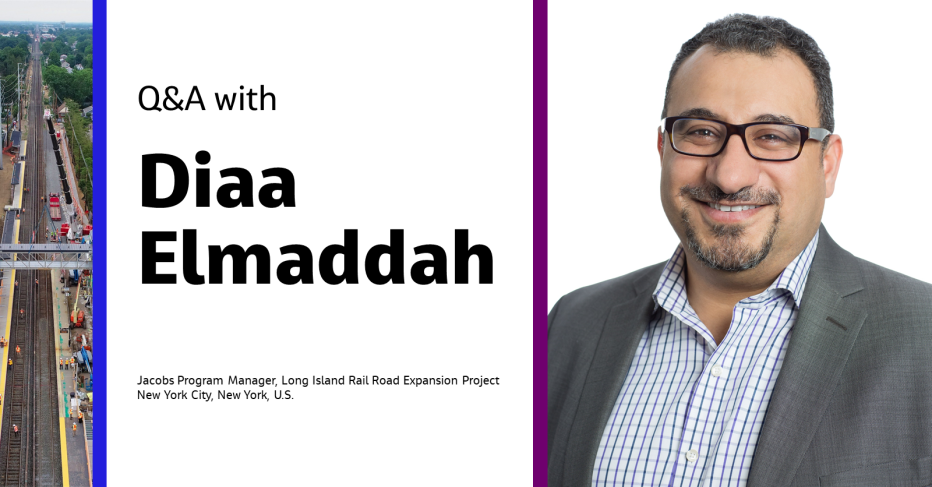
From the time he first arrived in the U.S. back in 1997, Diaa’s been in love with New York City. So it’s not surprising that he’s spent the past 25 years working hard to build the city’s infrastructure, starting with high-rise buildings and now focusing on critical rail and transit infrastructure. We asked him about his most recent Metropolitan Transportation Authority (MTA) program success, why he endorses the design-build delivery model and what lies ahead.
Let’s get started:
Tell us a little bit about yourself, your career with Jacobs so far, and what you’re working on.
As you said, I’ve been in love with New York City (NYC) since I arrived here, and I couldn’t wait to apply my passion for engineering. But first I obtained my master’s degree in civil engineering at the Stevens Institute of Technology in Hoboken, New Jersey, then I joined Thornton Tomasetti, a firm that specializes in high-rise buildings, as a structural engineer.
I really enjoyed doing 3D analyses and building models, then going into the field and seeing contractors making our designs a reality. It was also great exposure to the NYC construction and contracting community. After joining Parsons Brinkerhoff (now WSP), my focus shifted to rail infrastructure, starting with designing maintenance facilities for the MTA. This was also my introduction to the design-build environment, which is now my specialty.
Since joining Jacobs eight years ago, I’ve continued my focus on rail infrastructure and design-build delivery. I’m currently in the final stages of the very exciting Long Island Rail Road (LIRR) Expansion Project – Floral Park to Hicksville (Third Track) program for MTA Construction & Development (C&D), which just had its grand opening — it’s on budget and on schedule, and I’m very proud of our team. Jacobs and Arup are joint venture (JV) partners acting as the program management consultant (PMC.) My role started as deputy design compliance manager but evolved to being project director for the JV team, and onsite manager for the PMC.
What inspired you to be an engineer?
Well, I loved math as a student — yes, I was that kid who always raised my hand for all the math questions. I was really interested in computer engineering and science for a while, but once I got to college I got the civil engineering bug. In my mind I like to remember that the Egyptians were the first civilization to use civil engineering to build the pyramids, so maybe it’s just something in my culture and background to want to be a designer and builder.
Can you share an important lesson you’ve learned in recent years?
Design-build is a very challenging environment. As a project manager/construction manager (PM/CM) or program manager, my first priority is to protect our client’s interests, to facilitate a positive relationship with other stakeholders and create positive outcomes.
What I’ve learned over time is that a true partnership with the contractor is critical to success. When you’re a designer, you’re focused on creating the perfect design, the perfect solution for the engineering challenge. But you’re in a bubble, because this is not the priority of the contractor, whose focus is on delivering an efficient, compliant solution that saves money while making a profit.
Each stakeholder — the client, the designer, the contractor — views things differently. It’s very important to understand what the contractor is trying to do and develop a real life solution that meets the client’s needs in a practical, efficient, constructible manner, while appreciating the contractor’s methods, schedule and access to the site, particularly in a congested, urban environment. Coming from an analytical, model-building background, understanding the different perspectives and then working together is the most important lesson I’ve learned. It’s all about striking a balance — communicating, cooperating and collaborating with others.
When you’re not working, you can be found…
With my family — my wife Hiba and two daughters (Kenzie, 15 and Judy, 13.) We live in Syosset on the north shore of Long Island, where we moved in 2018 to be close to the Third Track project site. They love it here, and we spend most weekends either here or in the city trying new experiences or new restaurants. We also like to travel — we’ve been to Egypt (where I grew up,) to Dubai (where my wife grew up,) South America, Europe and Asia.
But honestly there is so much to see in NYC — sometimes we’ll just spend a couple of nights in a downtown hotel and explore the sights or just walk the neighborhoods.
-
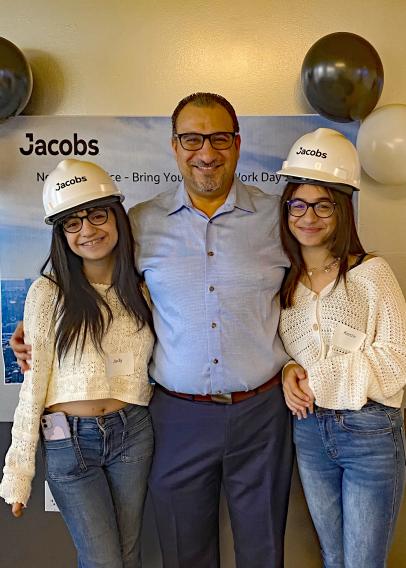
Diaa with daughters Kenzie (left) and Judy (right) at Jacobs’ Bring Your Kids to Work Day
-
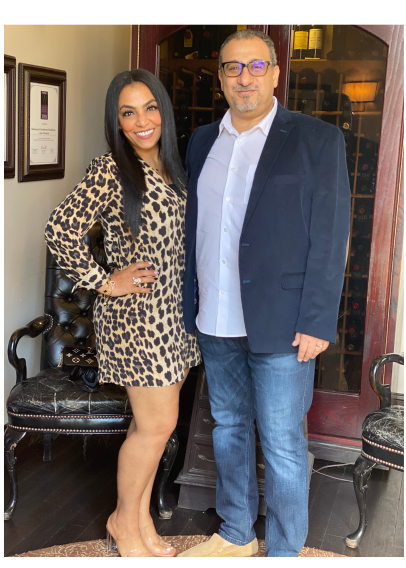
Diaa and his wife Hiba
-

Family photo taken at Summit One Vanderbilt – August 2022
What excites you about the future of Jacobs?
The strong cultural aspect of Jacobs really resonates with me, especially the focus on inclusion. Lots of companies talk but I have seen true action at Jacobs. I also love the focus on succession planning. It gives you good hope for the future and you feel that nothing’s going to fall through the cracks.
What’s your proudest moment?
I think one of my proudest professional (and personal) moments was early in my career when I moved here and finished my master’s degree in civil engineering. I didn’t stop there; I went on to finish a master’s degree in information management, as well as a Master of Business Administration (MBA). I got married while getting my MBA, so it took a little longer to finish, but it was so wonderful to have my wife and daughters attend my MBA graduation. It was one of my dreams, and I’m sure I will have more dreams come true by witnessing the success of my daughters.
What advice would you give to young professionals, especially those interested in a STEAM focus?
I would say the same thing I told my daughters recently, who are also very good at math and maybe looking at an engineering career. Find the things you like the most and pursue them. If you like math, find activities that will enrich your passion. At the same time, don't be scared of making mistakes, as they are essential steps toward your success. It’s better to make them early so you can learn and don’t make the same mistake twice.
What does the Long Island Rail Road Third Track Expansion project involve?
Well, I’ll try to summarize it, but it’s difficult to do because it’s almost 50 projects combined in one mega-project or program. The main focus is to increase the reliability of the Long Island Rail Road, and safety for commuters to go back and forth to the city, as well as increasing capacity. There are currently two tracks between Floral Park and Hicksville, which is about a 9.8-mile stretch, so we’re building a third track within the existing right-of-way, which will allow express trains to run, and also provide redundancy when needed.
Along the way we’re trying to eliminate all grade crossings, which are safety hazards. When we eliminate those, we increase safety for drivers and pedestrians and minimize traffic risks. Because we’re adding a third track, when we have a railroad bridge we have to widen the bridge or replace it with a new bridge, and we have to rebuild stations and expand platforms. To service the communities and villages along this stretch, we're adding two parking garages. We’re also adding retaining walls, security fencing and sound walls along the corridor to increase safety, security and reduce noise level throughout this highly residential area. Additionally, we need to renovate or replace the track system infrastructure including traction power, signal system, communications system, fiber and utilities.
The community is also at the top of our mind. We knew the project would impact them for four to five years, so we implemented a critical community outreach effort. Because of the complexity of the overall program and potential impact to several communities, our Third Track outreach team was comprised of a dedicated ambassador for each of those communities. The ambassador reported directly to the outreach team manager and dealt with anything that went on in the community including mitigating noise issues, eliminating traffic interruptions or beautifying the area being worked on.
The program involved eliminating eight grade crossings, replacing seven bridges and improving six stations. And when we build the stations, they’ll meet all Americans with Disability Act requirements and feature state-of-the-art technologies, such as digital signage, Wi-Fi access and USB charging stations.
-
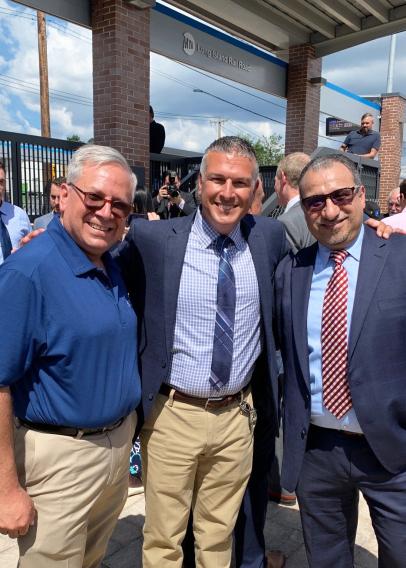
3rd Track block 1 commissioning celebration in August. Alan Paskoff, 3TC (Design-Builder JV) project executive (left) and Anthony Tufano (center), MTAC&D project executive
-
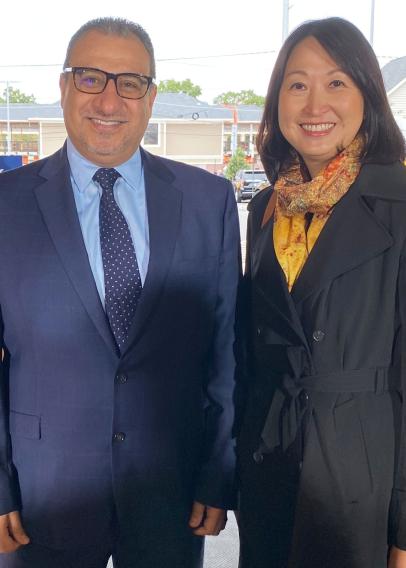
Diaa and Risk and Commercial Manager Eva Chan Hu at the LIRR Third Track Opening – October 4, 2022
“Diaa is a true professional and no task is too large for him to take on. His decision making, critical thinking and his ability to solve high level problems along with his dedication to the overall success of the project are exactly what an owner looks for when building a team.”
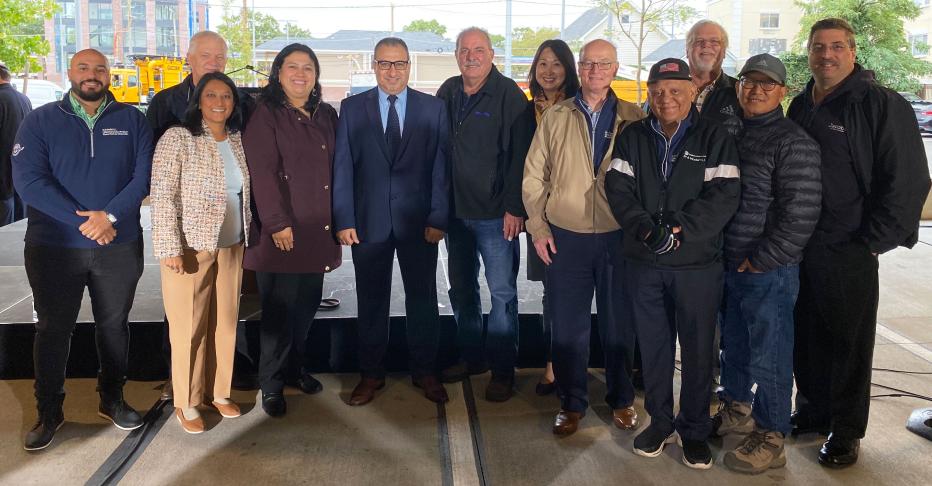
Team photo at LIRR Third Track Opening – October 4, 2022
What is Jacobs’ role on the Third Track project and how many people are working on it?
We’re the program management consultant in a joint venture with Arup. We are physically co-located with MTA C&D (the client) and the design-builder (four different contractors) in the same building. We have approximately 18 subconsultants, with many of their staff also co-located in the same building. We’re all together, reviewing all the designs coming in, collaborating, and facilitating so the project moves forward on schedule and budget. Co-location definitely helps with quick communications and onsite decision making.
Right now, we have about 13 full-time Jacobs staff, but we started with close to 20. There’s also lot of back office support from Jacobs offices that is not necessarily full-time but is critical to our success. At one point (including our JV partner and subconsultants) we had about 60 to 70 people.
As program management consultant, our role is to manage various stakeholders on behalf of the client to successfully complete the program objective, which is to ease LIRR commute times.
So, a follow-on question — the project started in 2018; what happened once the COVID-19 pandemic hit, a challenge you could never have anticipated?
Part of our program management approach is to start early and develop key performance indicators (KPIs) to track job progress and provide a reporting mechanism for the program. There were various KPIs used to measure success — financial, schedule, technical reviews — all designed to solve potential problems.
We had an overall dashboard and used electronic document management systems, so contractors were submitting information electronically and we were able to collaborate by making comments the same way (rather than using hard copies). So, when COVID-19 hit we had all these digital toolboxes right in front of us, which was great. Certainly, the team had a big adjustment from being fully present to partially remote to fully remote at one point.
Of course, the contractor and field engineer had to be present throughout. While present they were extremely careful, using their cars or project vehicles, staying within the car as sole occupant, and going out wearing their masks and keeping their social distance from others. They all had personal protective gear, following all Jacobs’ COVID-19 protocols. So onsite staff would prepare their reports, collaborate with others using Microsoft Teams or on the phone, and then submit everything electronically. One thing we had to do was make sure everyone had access to the internet so they could use all the digital tools.
Clear communications were critical to success. We held a monthly project focus meeting to align all our team members on any big issues, how we were solving them, and how we were moving forward from that point. But digital tools and the ability to work remotely (with support from the company) were definitely key to moving forward until we could come back into the onsite office. Now we’re almost full-time back in the office, but of course we’re still taking precautions.
I’m thrilled to be able to say we did not miss a beat with our milestones. We moved forward. We achieved all the milestones that we were supposed to achieve and we’ve commissioned all three blocks — the last one on October 3, with New York Governor Kathy Hochul, MTA Chair and Chief Executive Officer Janno Lieber and other dignitaries in attendance. The construction completion date was October 11, and now we’re in the process of going through the substantial completion milestone, which will be April next year, with final completion by December 2023.
Given the scale and complexity of the project, what has been the biggest challenge?
The most complex things we deal with are the rail systems, especially the signal systems, the traction power system, the cutovers — which is decommissioning the old systems and commissioning the new ones. All these critical elements have to happen over a track outage weekend because once that Monday morning rush hour hits, the trains have to be running and the signal system has to be working without a hitch.
What makes it easier is planning six months or a year ahead for that weekend. During the weekend we have 15-minute schedule increments so we know who’s doing what and where. We’ve done five or six cutovers so far, as well as eliminating numerous grade crossings. Of course, it’s all about collaborative planning, involving not just the program management team, but the design-builder, the designers and the railroad.
What steps were taken so the program was delivered on time and on budget?
The KPIs are very helpful in tracking and reporting status, making sure all the information we collect is transparent to the whole team and everyone understands what everybody’s status is. But another aspect of it is what you can do with the information. If we know a certain area is lacking we can identify what needs to be improved and what’s holding back that area from improving. So, we start collecting that information and figure out what the problem is. Risk mitigation is critical, so we have Jacobs Risk Manager Eva Chan Hu onsite and a clear risk identification process.
When an issue arises we ask how we can mitigate the risk and start solving the problem? Is this in our hands or outside our hands? Who are the key people? Can we reach out to certain stakeholders and try to figure out a resolution for this issue, or is this something internal to the project that we need to add resources on?
There are a lot of discussions that go into risk mitigation to make sure that if we have an area of struggle we can mitigate the situation to bring it back to where it needs to be.
So risk management is Eva's area of expertise. What’s it like working with her?
It’s fantastic. Eva is someone who I rely on totally with respect to the program’s commercial aspects and risk analysis. She can run lots of analytical models to see how a certain task in the schedule could affect us down the road, how it affects other tasks and milestones, how it would affect the rest of the program, and the probabilities of succeeding on a certain path forward versus another path. Eva does all those risk scenarios every month so we know whether we need to do something within the program or go back to Jacobs and ask for certain help with respect to resources, partners or the contractor. Eva has been not only my right hand but both my hands on the program!
How will the program benefit New Yorkers?
Well, this program connects to the East Side Access Project so together, they provide quicker access to Long Island from New York City and vice versa. It increases system reliability, ease of movement and economic opportunities for both areas.
What’s next for transport infrastructure in the New York area?
New York City is always doing new phases of transportation improvement, so the addition of East Side Access or the Second Avenue Subway or any other mega project will increase the reliability of the subway and transit system. And with each new connection you improve things within the greater transportation network that includes New York City Transit, Long Island Rail Road and Metro North Railroad. And this translates to added value for all New Yorkers and positively affects the economy of the whole region.
What technologies or construction methods are emerging that will fundamentally change the delivery of major transportation projects?
Innovation is always part of transportation methods, and now we’re leveraging methods like design-build, public-private partnerships, delivery partner and other delivery options. Technology is also a key feature, like the ability to design things remotely. So instead of having to be present in a certain location, you can collaborate right now with people all over the U.S., even globally. You can have expertise from different locations weighing in, and there are no walls or communication barriers between different teams.
How important are environmental and social justice (ESJ) factors such as sustainability and building connected communities when it comes to designing and delivering major transport projects?
ESJ factors are important in any project, but definitely for transportation projects because you’re impacting communities, and we need to understand how we’re impacting them and how to mitigate those impacts. Before the project even started we had an environmental impact statement and study to understand how our construction was going to affect all the different communities.
The environmental study had 300 or 400 questions and the responses made their way into the contract language to establish how we would achieve successes. The answers from the environmental study were also incorporated into elements such as the station design. We took a lot of steps to keep the community in mind during design, during construction and hopefully with the finish of the project as well.
What are the biggest challenges associated with working in a dense urban environment like New York and working with a wide array of stakeholders?
In a dense urban environment, working above ground is challenging, but when you go underground — like building a tunnel — it’s crazy because of the number of utilities in New York City. You often don’t know what’s underground until you start digging. Whatever structure you’re trying to do in between the utilities, it’s a major design risk that you must consider from early on. You do whatever you need to in order to figure out what’s under the ground, and then you incorporate that into the design. Figuring out how you’re going to relocate this or that to build what you need is a very challenging design aspect.
For the Third Track program there were lots of utility relocations, and the contract allowed for eight to nine months just for that and early construction work.
The other aspect, of course, is dealing with different stakeholders, which ties to the first challenge because when you start touching utilities, each one of them is a stakeholder because they are being affected by our work.
This is where stakeholder management comes into the picture — we must understand that each stakeholder may not have the same goals as the project or program and we need to acknowledge the project impacts on all stakeholders.
What do you like most about working with MTA?
MTA has excellent folks, with lots of project executives that really focus on orienting the team to one goal to achieve through the project. And that’s the vision that the project executive should have. And I believe MTA has the capacity and people to have that vision.
So many insights Diaa – thank you. One final question - What do you enjoy most about being part of #OurJacobs, and why should people want to work here?
I love the Jacobs culture. I love the focus on inclusion and making sure that everybody does their best at their job the best way they can and providing all the tools for that to happen. So, culture and inclusion are key things. So, if you want to work for a corporation that is big enough, but at the same time can focus on individual employees and make sure that everyone is included, this is the place.
We have a great name in PM/PMCM here in the New York area and when you say you are from Jacobs, the client understands that you are there to be solutions provider. The client knows that you can bring resources and state-of-the-art technology from our global reach to give them the solution they are looking for.
About the interviewee
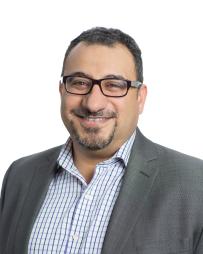
A well-rounded professional engineer and program director, Diaa Elmaddah offers extensive experience in design-build and multidisciplinary engineering design and management. He has more than 25 years’ experience on projects involving transit and railroad infrastructure including underground structures, shops and yards, track and rail systems and railroad stations. He has managed projects with a combined capital value of more than $2 billion for rail agencies in the New York and New Jersey metropolitan area, including Long Island Rail Road, Metro-North Railroad, NYC Transit and NJ Transit.
You might be interested in...
-
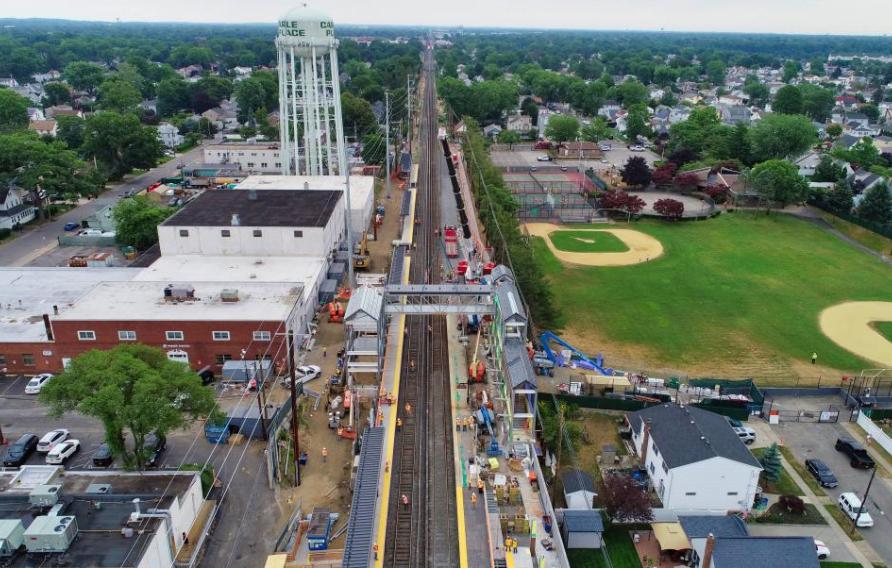 Showcase
ShowcaseLong Island Rail Road Expansion (LIRR), Long Island, New York
Expansion to America’s busiest commuter railroad comes on time and under budget
-
 News
NewsLong Island Rail Road Expansion Opens in New York
A major expansion to the Long Island Rail Road (LIRR)’s Main Line is now open to the public. Extending from Floral Park to Hicksville, New York, the 9.8-mile third track expansion to the LIRR Main Line increases capacity by 50%, alleviates congestion during peak hours, improves overall rail services and enhances rider safety. Read more to find out about this iconic project.
-
 News
NewsJacobs Receives Contract for East Side Access Tunnel and Rail Work in New York City
Jacobs Engineering Group Inc. announced today that it and its joint venture partner, LiRo Engineers, Inc., received a contract from the Metropolitan Transportation Authority Capital Construction Company to provide consultant construction management services for the East Side Access project in New York City, N.Y.
-
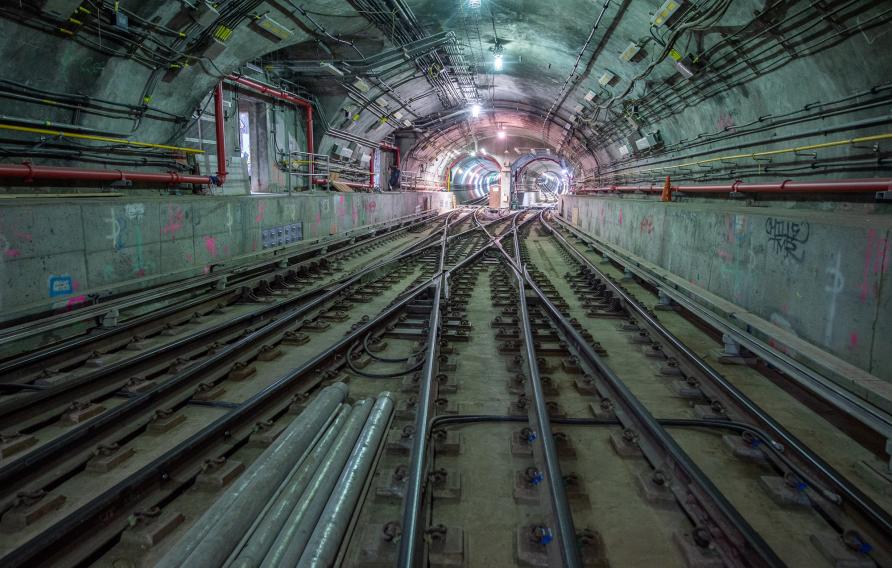 Showcase
ShowcaseGrand Central Madison
The Metropolitan Transportation Authority’s largest capital project is set to transform the busiest commuter railroad in the U.S., easing congestion and dramatically reducing commute times for New York City rail users.
Engineering News-Record: Five Minutes With Diaa Elmaddah, Jacobs Program Manager
Join #OurJacobs team
What drives you drives us as we work to build a better world – together. At Jacobs, every day is an opportunity to make the world better, more connected, more sustainable. We’re always looking for dynamic and engaged people to join our team. Bring your passion, your ingenuity and your vision.














































